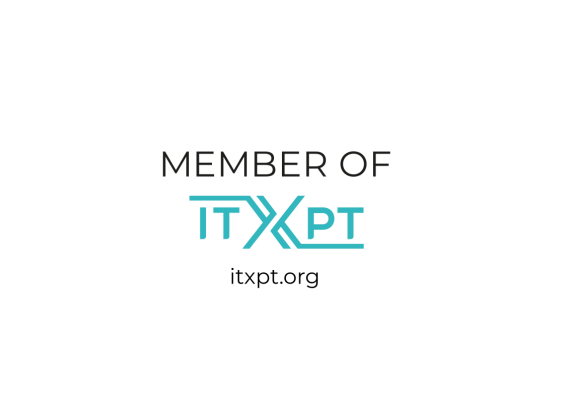
Today, access to and ownership of your data is a strategic necessity in all areas of operation. For public transport authorities and operators, it is no less accurate. The information is vital for the public transport entities, but it is also essential for the cities, regions, and countries. Another area where the data is central is in relation to other mobility actors, for example, when developing Mobility as a Service, MaaS, Mobility on Demand, and as an enabler for growth and innovation.
Data and the Smart City
In a modern city infrastructure, millions of things are connected, from small sensors to city-wide communication systems, which has coined the Smart City. What the expression means is not strictly defined, but the British research institute TWI explains it like this:
“A smart city uses information and communication technology (ICT) to improve operational efficiency, share information with the public and provide a better quality of government service and citizen welfare. The main goal of a smart city is to optimise city functions and promote economic growth while also improving the quality of life for citizens by using smart technologies and data analysis.”
They go on to explain what constitutes a smart city:
“Smart cities use a variety of software, user interfaces, and communication networks alongside the Internet of Things (IoT) to deliver connected solutions for the public. Of these, the IoT is the most important. The IoT is a network of connected devices that communicate and exchange data. This can include anything from vehicles to home appliances and on-street sensors. Data collected from these devices is stored in the cloud or on servers to allow for improvements to be made to both public and private sector efficiencies and deliver economic benefits and improvements to the lives of citizens.”
Read the whole article here.
With this explanation in mind, it is not hard to imagine why owning and accessing data is vital to a public transport authority and, in the end, the city, region, or country.
Vendor independence
With an open architecture and standardized data and interfaces, all equipment can interpret and use the data in the same format. This enables the system owner to combine solutions from different vendors within the same system, creating vendor neutrality. The data is also useable in all systems over time and accessible to the owner without converting data formats from the old solution from vendor A to the new from vendor B. This enables the system owner to exchange systems and solutions without losing or having to reformat data, which avoids the situation where you are locked to one system to continue accessing the data.
New innovative mobility solutions
With access to the public transport data, cities, regions, and countries can create new products and services within Mobility. Still, they can also provide access to the data for other actors to promote growth and innovation. Furthermore, they can analyze the data to gain new insights, such as improving city planning or detecting congestion causes.
While access and ownership of the data are crucial, it is equally essential that the data comes in a standard format to enable all equipment, systems, and entities to use it without translation or interpretation.
Data from sensors, equipment, and systems in standard format facilitates flexible IoT solutions and innovations such as automated vehicles, AI, and Mobility as a Service (MaaS). It can also enable connecting other transport modes, infrastructure, and sharing economy solutions, like sharing cars and bikes or ride-hailing to the public transport ecosystem.
Data enables optimization
With control over your data, you get an overview of your operation, for example, a vehicle fleet, which enables the identification of problems, bottlenecks, and areas needing development. The overview and possibility of monitoring systems allow continuous improvement and optimization based on correct and reliable data.
Predictive maintenance
Access to standardized data from all units and systems opens the possibility to use analytics and machine learning to predict machine failure and breakdowns. With signals from vehicles or systems used as fingerprints or patterns for when a machine part is about to break, you can exchange the part at the right time. This prevents expensive breakdowns, but it also makes it possible not to routinely exchange parts that are still functional just to be safe. Both these aspects can decrease maintenance costs.

The new gold
Today, data is beyond a state where it is merely a ground for possibilities or an enabler of decision-making. Information is vital, and a structure built around data in standard formats rather than the data adapted to different solutions brings freedom and control. Such an operation is called data-centric, which is one step further than data drive. In a data-driven operation, you make decisions based on data, but the data may or may not be the core. In a data-centric operation, the data is always the core. This blog post summarizes it quite nicely:
“Data Centric refers to an architecture where data is the primary and permanent asset, and applications come and go. In the Data Centric architecture, the data model precedes the implementation of any given application and will be around and valid long after it is gone. “
In a Data Centric architecture, the data sets are strictly determined and self-describable, which means that Data Producers and Data Consumers need no information about each other. If the sender adheres to the data format, the receiver can fully and accurately identify the data, which makes the data a permanent asset, independent of applications. In other words, this approach makes all hardware and software replaceable while maintaining control of the data, and if you control your data, you control your operation. This is, in essence, why data is so important.

